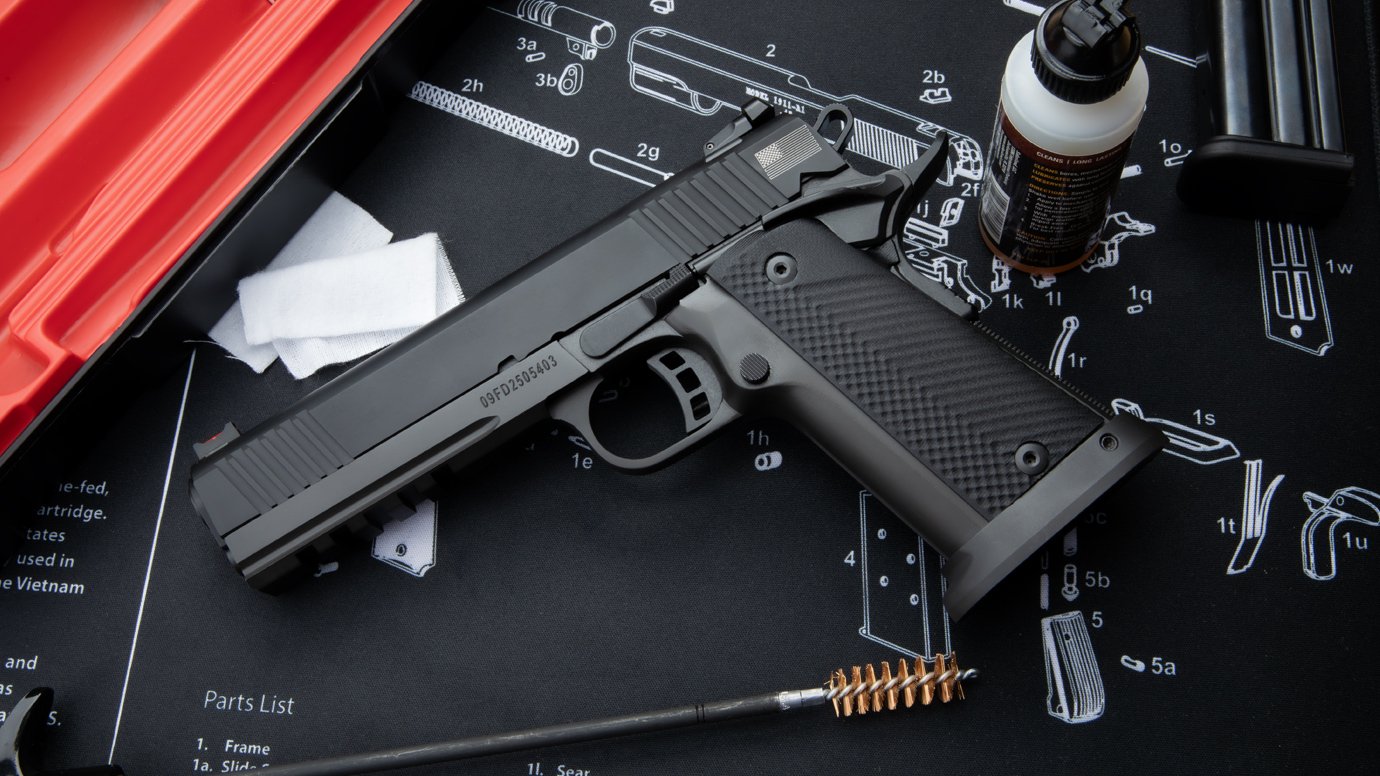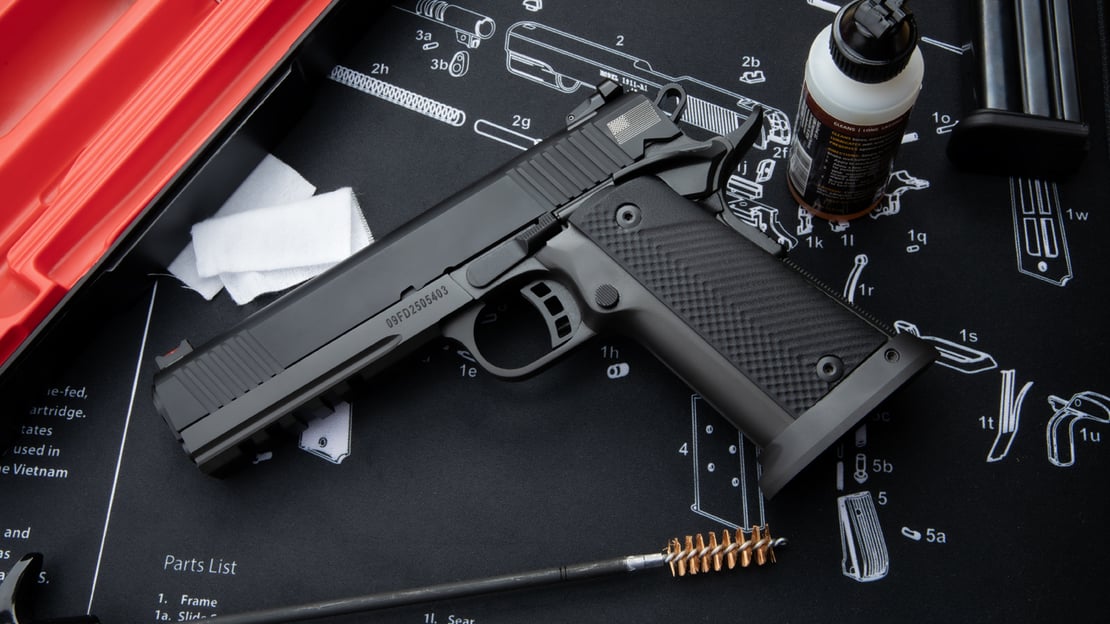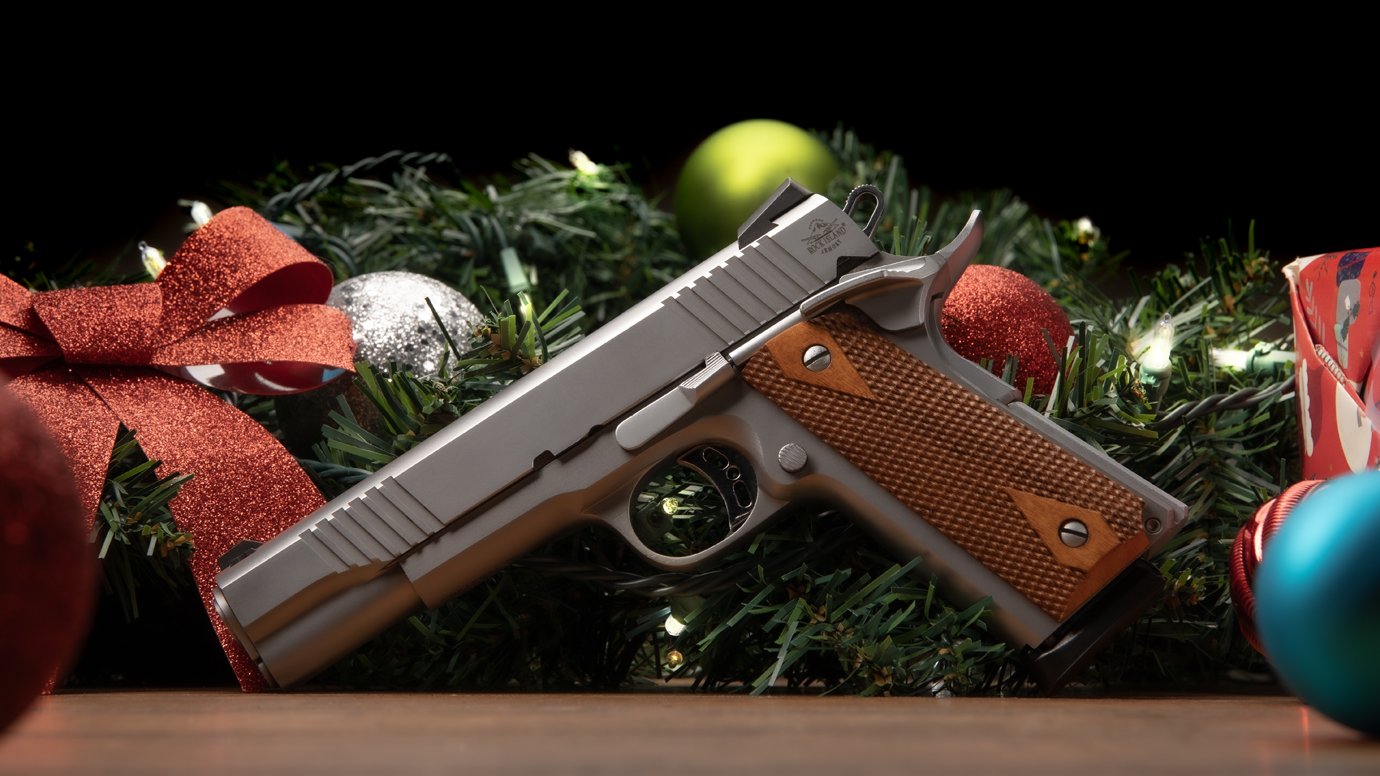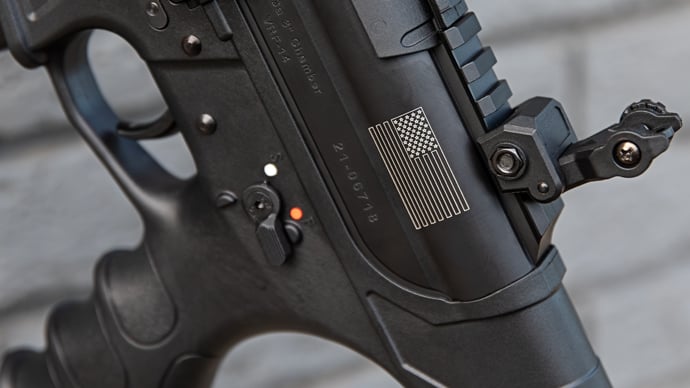Learn to Get a Grip on Your Pistol
Posted by Team Armscor on Mar 15, 2023 8 Minute Read
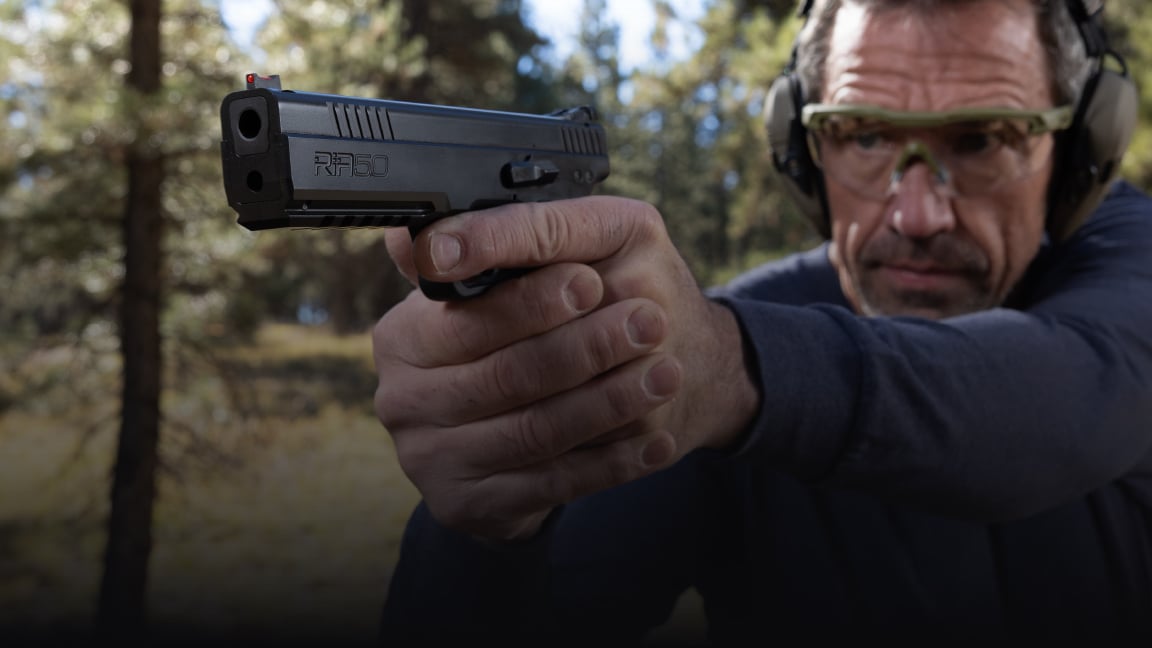
For me, one of the biggest indicators of a person’s skill level when it comes to firearms happens before I ever see them shoot. So much emphasis goes into practice, training, accuracy, speed and insert any other YouTube instructor’s opinion here – and they’re normally all super focused on the act of pulling the trigger. Don’t get me wrong, the act of pulling the trigger is extremely important… but there is so much more to being a firearms owner than simply shooting.
Firearm Safety First
Someone’s skill level with a firearm, in my opinion, all starts when they initially pull the gun out of the box, bag, or holster. The way they handle a gun right off the bat lets me know that the person holding the firearm is ready for live-fire instruction… or needs the beginner's crash course in basic firearms handling. Essentially, I’m trying to determine if there are any safety issues that need to be addressed before I allow this person to load their firearm with live ammunition around me or anyone around me. I know that mistakes will be made but I would still like them to be made in the safest way possible. I also want to make sure that the person acknowledges and understands their mistake right away instead of me having to explain it in depth right then and there in the heat of the moment.
Now, let’s talk about the things that every beginner should know before they ever load the gun.
Firearm Handling: The Basics
For me, the very first thing that any new firearms owner should fully understand is the basic operations behind how their firearm works. I’m not saying that you must completely dismantle the gun to every last part, and explain how these pieces fit together, but you should at least understand what is happening as you are loading, unloading, actively pulling the trigger and what happens after the shot is fired. This knowledge will ensure that the person holding the firearm will be completely confident and comfortable with what is happening with the firearm as they are handling it.
I will typically take the gun apart as far as a basic field strip: I will proceed to show what happens when a person pulls the trigger, how the firing pin/striker interacts with the bullet, how the gun will react as the bullet is being fired, and what happens after the shot is completed and the condition the firearm is in at that point. While the importance behind this knowledge does rely heavily on the person that is the new firearms owner, a lot of this can also be helpful or hurtful, depending on the type of person giving the instructions.
It’s important to remember that you all are brand new at one point, and we didn’t fully comprehend or understand anything about the firearm. A negative Interaction with someone would tend to leave a negative imprint on your entire experience upon your first initial impression and that can lead to a lasting resentment toward firearms.
When I instruct people that are brand new firearms, I make it a point to remember what it was like, to be a brand-new person in the firearms world. Using very technical terms all the time can seem overwhelming to someone that doesn’t fully understand what they are, and maybe are too timid her shine for fear of asking a “stupid question.” Be sure that when you were talking to these people that you are trying to explain things as if you were explaining the importance of brushing your teeth to your child.
Break it Down
Now I don't mean that you should break everything down to the complete basic and talk to them like they are in fact a child but talk to them with the goal of instructing them and educating them about the firearm. Don't just tell them what a firing pin is, show them the firing pin and then explain how it interacts with the hammer or striker and then how that will interact with the primer and so on and so forth. This way down the road when something does happen you can explain the situation using technical terms and they now possess the knowledge to understand exactly what you're talking about. By building a strong foundation based on the knowledge of the firearm, its parts, and how they work together, you are setting them up for a lifetime of success.
Once I feel like I have successfully educated the new shooter on their particular firearm and how it functions, the next step is to teach them how to handle it in a safe and professional manner. This starts by explaining the process of how to grip the gun. However, this doesn’t mean how to grip the gun while preparing to fire it but rather how to grip the gun throughout the entire interaction with the firearm. “How do you hold the gun as you're preparing to load a magazine into it?” “How do you hold the gun while reloading a fresh magazine?” “How to hold the gun while attempting to rack the slide to clear a malfunction or lock the slide open?” These are all things that you can teach someone before ever having to actually load the firearm. I believe these are also things that everyone should know how to do before ever loading their firearm. I would much rather teach someone how to manipulate their firearm when it's completely unloaded and in a safe condition instead of trying to teach them how to do it on the firing line with live ammunition in the firearm.
How many times have you ever seen someone grab the slide of the gun and hold the gun upside down while inserting the mag, slapping the mag into the bottom of the gun, and then transitioning the firearm back into their strong hand holding the grip, before loading a round into the chamber? How many times have you seen someone that might not have the strongest upper body attempt to pull the slide back in an effort to load the gun and fail several times because they're holding the gun three feet in front of their body? How many times have you seen someone attempt a reload by inserting the magazine backward, then once they correct that mistake, they extend the gun out without ever sending the slide forward and chambering a new round from the fresh magazine? All these things can be avoided with proper education on how the firearm functions and works and a little bit of guidance from an experienced instructor.
I would like to take some time to explain all of these steps in a little bit more detail, however, please do note that no YouTube video, magazine article, and or comments section on any social media platform will ever be as good as live in person one-on-one instruction from a proper firearms instructor.
Proper Instruction
Some people may claim to be an instructor because they have a piece of paper from some online course, and believe me when I say this, that does not mean that you are going to be given the best instruction possible. A proper firearms instructor will be able to watch you and your firearms and then develop a training routine around your specific needs. That is something that you cannot learn from books, YouTube videos, or the self-proclaimed expert that works behind the counter of a gun shop.
Now that you’ve got a grip on your pistol, learn more and get trained up on your shooting techniques.


